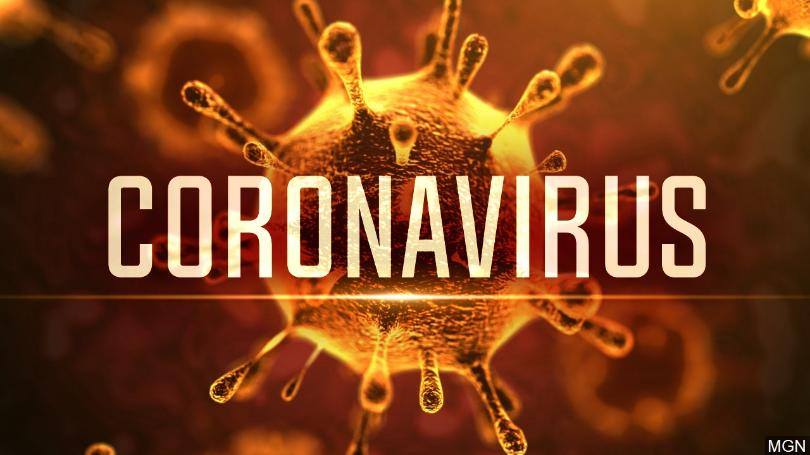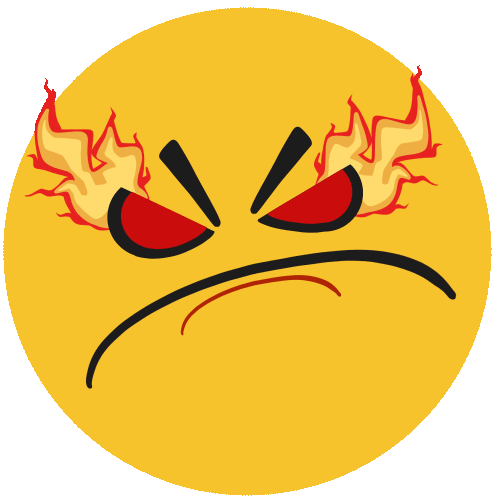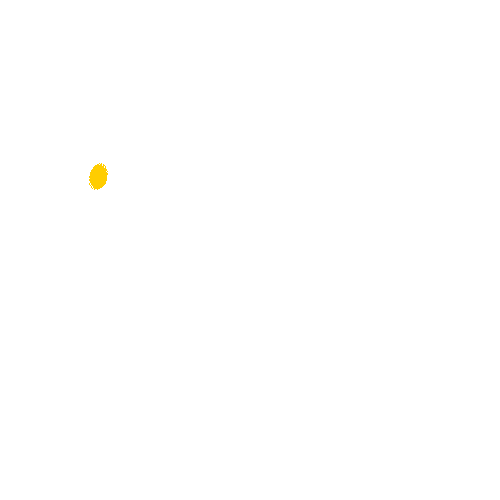Coronavirus Epidemic: WHO Declares a
Translated from Dutch. View the original post
here
REPORT FOR LEADING AND COOPERATING WITH A CRIMINAL ORGANIZATION.
AGAINST:
Mr. H.M. De Jonge (Hugo) Minister of VWS
Mr. J. Bridge (Hans) Director General RIVM
Mr. J.T. van Dissel (Jaap) Director CIB RIVM
Mrs. M.C.J.M. (Miriam) Sturkenboom Associate Professor UMX Utrecht/ member of the WHO Global Advisory Committee for Vaccine Safety
TRANSLATION FROM ENGLISH
#coronaviruslockdown
#wouterragiver
Source: https://www.globalresearch.ca/coronavirus-epidemic-who-declares-a-global-public-health-crisis-can-we-trust-the-who/5702360
Coronavirus Epidemic: WHO Declaires a 'Fake” Global Public Health Emergency
Over the past two weeks, the World Health Organization (WHO) had already identified a possible global public health crisis with regard to the new Chinese coronavirus (2019-NCOV) classified as viral pneumonia. The virus outbreak takes place in the city of Wuhan, a city in Eastern China with more than 11 million inhabitants.
On 22 January, the members of the WHO Emergency Committee “expressed divergent views on whether this event is a PHEIC or not”.
On 30 January, the committee met again and declared the coronavirus epidemic as an emergency for public health of international importance (PHEIC).
(for details on the committee meetings scroll to ANNEX)
What justified this far-reaching decision by the Director-General of the WHO?
Approximately 9,600 coronavirus (pneumonia) confirmed cases (30 Jan). And 213 deaths registered in China on January 30, which has a population of nearly 1.4 billion.
No deaths have been reported from mainland China.
Of the 9600 confirmed cases, around 150 cases of infection have been recorded outside China. In addition (based on the above data, January 30), the NCOV of 2019 has a low mortality rate (2.1%) compared to seasonal flu.
CBS screen scan, 30 January 2020
The above CBS quotation is misleading.
Based on data of January 30, the following should be emphasized
Outside China, no deaths occurred,
More than 9500 registered cases in China,
Approximately 150 cases registered outside China (see list below)
Photo see source
In the US, on the other hand, the Centers of Disease Control estimate that for the 2019-20 season at least 15 million influenza virus diseases, 140,000 hospitalizations and 8,200 deaths in the US, with a population of 330 million, about a quarter of China.
And there was virtually no coverage or concern about the seasonal flu, which resulted in 650,000 deaths worldwide in 2017.
Photo see source
Source CDC
The media are gaining momentum: the Wuhan coronavirus is portrayed as a global threat.
The latter is not confirmed by the registered cases of infection and death.
Only 150 cases outside mainland China (30 January). No deaths registered outside China.
Ironically, WHO Director-General Tedros Adhanom Ghebreyesus confirmed at a press conference that:
“The main reason for this statement is not because of what is happening in China, but because of what is happening in other countries. Our main concern is that the virus can spread to countries with weaker health systems and that are not well prepared to deal with it. '
What happened “in other countries” (i.e. about 150 cases of infection and no registered deaths in 23 countries and 2 territories (Macau and Hong Kong) (30 January)) does not justify the launch of a WHO-sponsored global emergency in the field of public health. (See below for distribution by country).
Coronavirus infections: by country
Source Al Jazeera stating official sources, 31 January 2020
Australia — 9
Cambodia — 1
Canada — 3
China — 9.809
Macau -7 The city of Macau, a gambling hub
Hong Kong, 12
France — 6
Finland — 1
Germany — 7
India — 1
Italy — 2
Japan — 16
Malaysia — 8
Nepal — 1
Philippines — 1
Russia — 2
Singapore — 16
South Korea — 11
Spain — 1o
Sri Lanka
Thailand — 19
United Kingdom — 2
United States — 6
United Arab Emirates — 4
Vietnam — 5
Read More, see source website: COVID-19 Coronavirus “Fake” pandemic: timeline and analysis
TOTAL 152 (excluding China)
My question to the Director-General of the WHO.
Do these figures justify the launch of a global public health emergency?
6 in the US, 2 in Canada, 16 in Japan, 2 in the UK, 7 in Germany, etc. (30 Jan)
No deaths registered outside China (Jan 30). And the opinion of an expert led by the World Health Organization (WHO) approved a global emergency for health, which causes great harm. What is needed is routine WHO support to China and countries that have registered virus infections.
The decision of the Director-General of WHO is dramatic and unnecessary. It has caused an atmosphere of fear and intimidation.
Fake Emergency? Can we trust the WHO?
Corporate media, in turn, serve as a tool for disinformation. The audience has been deceived.
About 150 infections worldwide (excluding China). The world's population is 7.7 billion, the Chinese population is 1.4 billion.
A rash decision of the Committee adopted at the WHO headquarters in Geneva.
Déjà Vu: Flashback to 2009. The pandemic of swine flu H1N1
There are precedents: (= something similar that happened before with which you think you can compare (something))
In 2009, on the basis of incomplete and scarce data (with authority), WHO predicted that the H1N1 swine flu virus would result in:
“... as many as 2 billion people can get infected in the next two years - almost a third of the world's population.” (World Health Organization as reported by Western media, July 2009).
It turned out to be a billion-dollar bonus for Big Pharma, supported by the Director-General of WHO, Margaret Chan.
In June 2009, Margaret Chan made the following statement:
“On the basis of... expert reviews of evidence have been met the scientific criteria for a flu pandemic. I therefore decided to increase the level of the flu pandemic warning from phase 5 to phase 6. The world is now at the beginning of the flu pandemic of 2009.... Margaret Chan, Director-General of the World Health Organization (WHO), final briefing June 11, 2009)
What “expert reviews”?
In a following statement, she confirmed that:
“Vaccine producers could at best produce 4.9 billion pandemic flu shots per year,” says Margaret Chan, Director-General of the World Health Organization (WHO) quoted by Reuters, 21 July 2009)
A financial windfall for Big Pharma Vaccine Producers, including: #GlaxoSmithKline ,
#Novartis , #merck & Co., #sanofi , #pfizer . et al.
#swineflu Fake news, fake statistics, lies at the highest level of government
The media went overdrive. (without an ounce of evidence). Fear and uncertainty. Public opinion has been deliberately deceived
“Swine flu can affect up to 40% of Americans in the next two years and as many as several hundred thousand may die if a vaccination campaign and other measures are unsuccessful.” (Official Statement of Obama Administration, Associated Press, July 24, 2009).
“The United States expect to have 160 million doses of swine flu vaccine available sometime in October”, (Associated Press, 23 July 2009)
But the pandemic never happened.
There was no pandemic in 2 billion people...
National governments had ordered millions of doses of swine flu vaccine from Big Pharma. Meanwhile, the H1N1 virus was mutated. Millions of doses were then destroyed: a financial bonus for Big Pharma, a spending crisis for national governments.
There was no investigation into who was behind this billion-dollar fraud.
Several critics said the H1N1 pandemic was “fake.”
Reported by Forbes:
The Parliamentary Assembly of the Council of Europe (PACE), a watchdog for human rights, publicly examines the motives of the WHO in proclaiming a pandemic. The chairman of his influential health committee, epidemiologist Wolfgang Wodarg, has indeed stated that the “false pandemia” is “one of the biggest drug scandals of the century'. (Forbes, 10 February 2010, added italics)
For more details on the 2009 H1NI pandemic, see:
Think of the 2009 H1N1 pandemic for swine flu: manipulating data to justify a global public health emergency
By Prof. Michel Chossudovsky, January 25, 2020
Important lessons from the 2009 H1N1 pandemic:
Can we trust the Western media?
Can we trust the World Health Organization (WHO) and Western governments, including the American Centers for Disease Control and Prevention (CDC), all of which serve Big Pharma's interests (at taxpayers' expense)?
What's at stake, why the media propaganda?
ATTACHMENT
This Annex contains details of the WHO's decision of 3 January to identify the Wuhan coronavirus epidemic as a public health emergency of international importance (PHEIC).
Click here for the full statement of the second meeting of the Emergency Committee International Health Regulations (2005) on the outbreak of new coronavirus (2019-NCOV), click here
The second meeting of the Emergency Committee convened by the Director-General of the WHO took place on Thursday 30 January 2020, from 13.30 to 18.35, Geneva time. It was the task of the Committee to “give advice to the Director-General, who will take the final decision on the identification of an emergency in the field of public health of international importance (PHEIC).” That decision was taken by the Director-General following a meeting of three hours.
Below are relevant fragments
Members and advisors of the Emergency Committee were convened via teleconferencing
The Director-General welcomed the Committee and thanked them for their support. He handed over the meeting to the chairman, Professor Didier Houssin.
...
Representatives of the Ministry of Health of the People's Republic of China reported on the current situation and measures taken for public health. There are now 7711 confirmed and 12167 suspected cases across the country. Of the confirmed cases, 1370 are serious and 170 people have died. 124 people have recovered and have been discharged from the hospital.
The WHO Secretariat gave an overview of the situation in other countries. There are now 83 cases in 18 countries. Of these, only seven had no travel history in China. There has been human to human transmission in 3 countries outside China. One of these cases is serious and no deaths have occurred.
At its first meeting, the Committee expressed differing views on whether or not this event is a PHEIC. At the time, the opinion was that the event was not PHEIC, but the members of the Committee agreed on the urgency of the situation and suggested that the Committee should continue the meeting the next day when it reached the same conclusion.
This second meeting will take place with a view to a significant increase in the number of cases and additional countries reporting confirmed cases.
The Committee welcomed the leadership and political commitment of the supreme levels of the Chinese Government, their commitment to transparency and the efforts made to investigate and contain the current outbreak. China quickly identified the virus and shared the order, so that other countries could quickly diagnose it and protect themselves, which led to the rapid development of diagnostic tools.
The very strong measures taken by the country include daily contact with the WTO and comprehensive multisectoral approaches to prevent further dissemination. It has also taken public health measures in other cities and provinces; conducts research on the severity and portability of the virus, and shares data and biological material. The country has also agreed to cooperate with other countries that need their support. The measures taken by China are good not only for that country, but also for the rest of the world.
The Committee welcomed an upcoming multidisciplinary technical mission from the WHO to China,..
The Committee reiterated the importance of examining the potential source, excluding hidden transmission and informing risk management measures
The Committee also stressed the need for improved surveillance in regions outside Hubei, including pathogenic genomic sequencing, in order to understand whether local transmission cycles are taking place.
The WHO should continue to use its networks of technical experts to assess how best to combat this outbreak worldwide.
The WHO should provide more intensive support for preparation and response, especially in vulnerable countries and regions.
Measures should be developed to ensure rapid development and access to potential vaccines, diagnostics, antiviral drugs and other therapies for low and middle-income countries.
The WHO should continue to provide all necessary technical and operational support to respond to this outbreak, including with its extensive networks of partners and collaborative institutions, to implement a comprehensive risk communication strategy and to promote research progress and scientific developments related to this new coronavirus.
The WHO should continue to examine whether it is advisable to create an intermediate level between PHEIC's binary capabilities or not PHEIC, in a way that does not require a reopening of negotiations on the text of the IHR (2005).
The WHO should be able to assess the situation in a timely manner and update its fact-based recommendations.
The Committee does not recommend travel or trade restrictions on the basis of the information currently available.
The Director-General stated that the outbreak of 2019-NCOV constitutes a PHEIC and accepted the opinion of the committee and issued this opinion as temporary recommendations under the IHR.
...
The Emergency Committee shall be convened within three months or earlier, at the discretion of the Director-General.
The Director-General thanked the Committee for its work.

- Report this post
 Yoors
Premium
Yoors
Premium





















